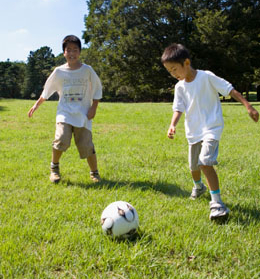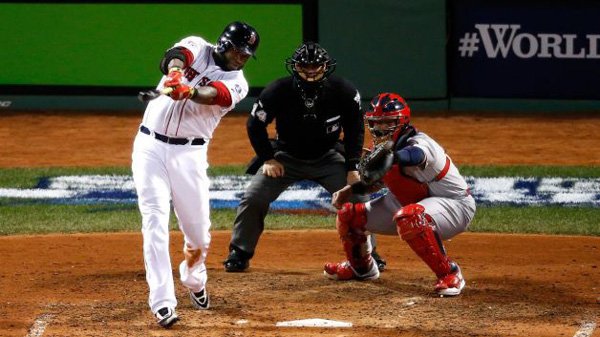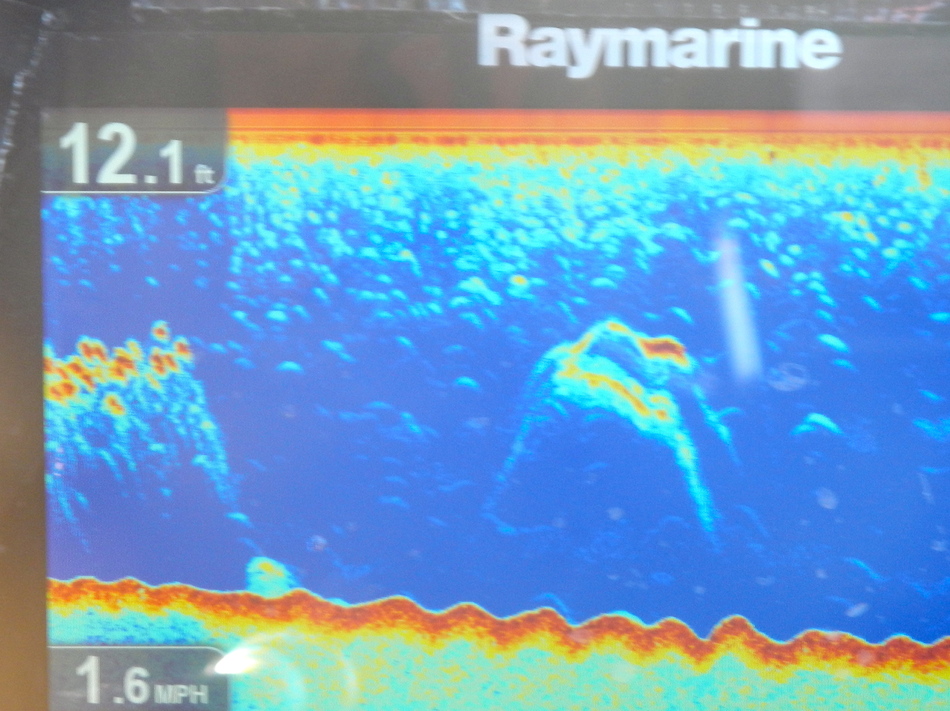Who thought up the game of rugby?
Question
Who thought up the game of rugby? Such as the rules, where it started, how did it come about?
Answer
Alex,
Forms of football have existed for centuries.
In the 1800's, the seven major 損ublic?(for Americans these are actually private) schools of England started to formalize the rules of 揻ootball? While six of the seven schools played a very similar game involving kicking and chasing the ball, Rugby school in Warwickshire played a very different game.
Association football (Assoc football- hence soccer) developed as those six schools refined the rules. How Rugby's game developed differently is not really known.
In Rugby Union myth, a young player by the name of William Webb Ellis at Rugby school in 1823 started the unique aspects of rugby football by, as the stone monument at Rugby School states:
"This stone commemorates the exploit of William Webb Ellis who with a fine disregard for the rules of football, as played in his time, first took the ball in his arms and ran with it, thus originating the distinctive features of the rugby game, a.d. 1823"
Like many good legends, it is false.
The reality is that handling the ball was generally permitted in all variations of football in the early 1800s. This existed up to the formation of the Football Association in 1860. There was even consideration to allow ball handling in Association football. Ultimately it was forbidden.
Back to Rugby School's style of football: By the 1830's running with the ball was the norm, the H shape goal post (two vertical posts and a cross bar) was being used, and the concepts of the scrum and line out were introduced.
The basic modes of scoring were in place. With the introduction of the crossbar also came a change in the rules of rugby that said a goal could only be scored by the ball passing over the bar from a place kick or drop kick. A 搕ry at goal?was awarded when a player placed the ball down on the ground behind the opponent's goal. This is where the where the Gridiron football term 搕ouch down?for a score came from. The 揳fter try?conversion was based on where the ball was touched down in the try zone. To keep the teams apart and prevent the ball from being passed forward, the 搊ff your side?rule was introduced.
The official rules (the laws) were initially agreed on and documented in 1862. Many former Rugby students and clubs wanted to play rugby and have a formal competition structure outside of the Rugby School.
In 1871, the Rugby Football Union was formed with 21 clubs. This is the official start of what is now known as Rugby Union Football.
Two other forms of Football developed form Rugby Union. In the mining communities of Wales and northern England a variation known as Rugby League started. Significant in this was that it was played by the working classes and professionalism was allowed. In the United States, Rugby Union evolved into what is now known as Gridiron, or American, Football.
BASIC DESCRIPTION OF THE GAME
Rugby, at its very essence is a soccer game where the players pick up the ball and run with it. Legend has it that the first Rugby game was a soccer game that a player in a fit of frustration picked up the soccer ball and started to run with it. A somewhat colorful beginning for what has become one of the most enjoyable sports in the world.
The Object of the Game, as defined in the laws:
?..two teams of fifteen players each, observing fair play and according to the Laws and in a sporting spirit, should be carrying, passing, and kicking the ball to score as many points as possible.?
A player with the ball may advance the ball by running, kicking, or passing the ball. He may kick it forward, but may only pass the ball laterally or behind him. Other members of the team in possession of the ball must stay behind the ball to participate in the play. There is no blocking for the ball carrier. Any player on the pitch may run with the ball.
The field, the pitch as it is known in the Rugby world, is officially 70 meters by 120 meters, which of course is liberally interpreted at the local level. A full-length rugby field, known as a 損itch,?is approximately 100 meters long by 70 meters wide with a 20-meter try (end) zone. Many rugby fields in America measure 100 yards long by 75 yards wide, with try zone areas of 10 to 20 yards reflecting the tendency to use football fields.
There are fifteen players on the pitch per side. The object of the game is to score by bringing the ball down field, crossing the goal (try) line, and putting the ball down with downward pressure in the try zone. This first of three methods of scoring is worth five points. The second is the after try conversion that is kicked directly out from the try zone where the ball was placed which is worth two points. Finally, any other kick that goes between the goal posts is worth three points.
The matches have two forty minute halves with a five-minute half time. The only substitutions allowed are for injuries, and these are limited. For that reason, a player with a minor injury may get a minute or two to regain his composure, work out the cramps, or stem the flow of blood. If the player cannot play on, he leaves the field. Time taken out for injuries is made up in the last part of the match.
Teams themselves are broken down into two groups, the forwards, and the backs. The forwards are similar in function to the offensive line in American football, while the backs are similar to the backs. The forwards generally gain possession of the ball, and the backs generally advance the ball. Rugby is a possession-based sport that places a premium on keeping the ball. In addition, once the set play is completed, there is little difference between the forwards and backs. Both groups can pick up the ball and run, can kick, can tackle, and get into rucks/mauls. The only ways to advance the ball down the field are kicking or running. It is illegal to pass the ball forward. The player with ball may be stopped by tackling. Play does not stop once a player is tackled. If a player is tackled and taken to the ground, the tackled player must release the ball and cannot play the ball again until he regains his feet. Depending on whether the player is on his feet (a maul), or on the ground (a ruck), a struggle ensues to either maintain, or gain possession of the ball and get it out to the backs. Once a ruck is formed, hands may not be used to gain control of the ball. This is done by either pushing the opposition off the ball, or moving the ball back with his feet.
For a minor infraction of the laws (rules of the game), or if the ball becomes tied up in a ruck or a maul, the referee will call for a scrum. A scrum is the large cluster of shoving people, or more correctly the forwards of each team trying to gain possession of the ball by pushing the opposition off it. Major infractions of the laws will result in either a penalty kick, or a free kick, depending on the severity of the infraction. When the ball goes out of bounds, the play is reinitiated with a lineout. This is when both teams line up opposite each other in two parallel lines and the team with the lineout throws the ball down the line between them. Once the ball is in the air, both teams jump to catch the ball.
The opponents may tackle the ball carrier at any time. Tackles must be made with the arms wrapped around the opponent's body below the shoulders. A player may not leave his feet to make a diving tackle or to jump over an opponent. Above the shoulder tackles, and other tackles deemed dangerous, are against the laws (rules) and are severely penalized.
Rugby is an impact sport. The contact, while vigorous, is much less dangerous than in American football since there is no blocking, no rigid protective equipment allowed, and there are stringent rules on tackling. The emphasis on possession and the requirement that only allows contact near the ball decreases the number of physical collisions. Dirty, or dangerous, play is not allowed by the laws, nor is it tolerated by the players. Rugby is still considered 揳 sport of ruffians and thugs played by gentleman.?Many players consider the sportsmanship aspect of the game its most important and significant attribute.
PLAYERS
1 General
Each team, or 搒ide? consists of 15 on-field players: eight forwards and seven backs.
The forwards (collectively known as the scrum or pack) tend to work as a tight group. The forwards have four primary responsibilities:
a. win the ball in set play
b. win or maintain possession of the ball in the loose play
c. provide support
d. create an advantage by skill and intensity.
The backs (collectively known as the backline) on the other hand tend to be spread out over the pitch in order to advance the ball up field. To do this the backs must focus on five responsibilities:
a. receive the ball from the forwards
b. advance the ball beyond the gain line
c. provide support
d. create advantage
e. provide defense in depth.
While the forwards usually focus on ball possession and the backs on ball advancement, one of the most exciting aspects of rugby is that all players are involved in all aspects of the continuous flow of the game. Rugby forwards often handle the ball and must be adept at passing and catching, while backs must be prepared to contest for possession of the ball. Because of the continuous flow of the game, players must learn to think and react for themselves.
The Pack (Forwards)
1. Front Row - Consists of two props, #1 and #3, and the hooker, #2. These are the pillars of the scrum. They are strong, and generally squat in stature. The props direct the power of the other forwards into the opposing pack and provide the support for the hooker, who attempts to hook the ball with his feet.
2. Second Row -The locks, #4 and #5, stabilize the scrum and are the real power behind the push when the ball comes into the scrum. At the lineout, they are usually the tallest and best jumpers.
3. Loose Forwards - The flankers, #6 and #7, and the eight-man, #8, are often the most mobile and active of the forward pack. On defense, they are always after the ball and usually first to the breakdown (when an opponent goes to the ground with the ball). Offensively, they are usually running with the backs and provide the base for second phase play from the loose ball.
The Backline (Backs)
1. Scrumhalf -- #9 is the primary field manager of the team. He must work with his forwards to cleanly get the ball and pass it out to his backs to press the attack. The Scrumhalf runs the offense and must communicate with both the forwards and backs. He is the player who puts the ball into the scrum and passes the ball to the backs. The scrumhalf also receives the ball from the forwards in lineouts, rucks, and mauls. In rucks and mauls, the scrumhalf directs the forwards to counter the opposition and retrieve the ball.
2. Fly half -- #10 is usually one of the more experienced rugby players on the team. After receiving the ball from the Scrumhalf, the Fly half directs the backline attack. He will pass the ball, kick, or run to take advantage of the opponents' mistakes.
3. Centers -- #12(inside) and #13(outside) are usually the hardest hitting, and best runners on a rugby team. They must tackle like American football linebackers and run like a tailback. They must be skilled both defensively and offensively. In the backline, they are the likeliest to become involved in a ruck or a maul.
4. Wings -- #11 and #14 are the speedsters of the team. Teams like to get the ball to their wings quickly and let the speedsters have room to maneuver and run. Defensively the wing is often the last player between an opponent and a score and the only protection from an opponent's run along the sideline (known in rugby as the touchline). Weak side wing acts as full back when fullback is involved with a play (crashing in the offense, tackling in the defense).
5. Fullback -- #15 is the rugby equivalent to the free safety. While it may appear he does little, the fullback is one of the most difficult positions on the field. He is the last line of defense between the opposition and end zone. He must make a quick decision to come into a play or hang back, and he is the one who most often makes the lonely last tackle before a score. Offensively, the fullback will join the backline attack to overwhelm the opponent's defense.
I hope this is what you were looking for.
Deane Shephard
Stuttgart RFC
wing tackling
scrum half passing


